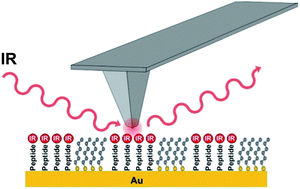Introducing cymantrene labels into scattering scanning near-field infrared microscopy
Abstract
In this paper we investigate metal–organic compounds as infrared (

* Corresponding authors
a
Physical Chemistry II, Ruhr-University Bochum, Bochum, Germany
E-mail:
Ilona.Kopf@rub.de
b Inorganic Chemistry I – Bioinorganic Chemistry, Ruhr-University Bochum, Bochum, Germany
In this paper we investigate metal–organic compounds as infrared (

 Please wait while we load your content...
Something went wrong. Try again?
Please wait while we load your content...
Something went wrong. Try again?
I. Kopf, H. W. Peindy N'Dongo, F. Ballout, U. Schatzschneider, E. Bründermann and M. Havenith, Analyst, 2012, 137, 4995 DOI: 10.1039/C2AN16201F
To request permission to reproduce material from this article, please go to the Copyright Clearance Center request page.
If you are an author contributing to an RSC publication, you do not need to request permission provided correct acknowledgement is given.
If you are the author of this article, you do not need to request permission to reproduce figures and diagrams provided correct acknowledgement is given. If you want to reproduce the whole article in a third-party publication (excluding your thesis/dissertation for which permission is not required) please go to the Copyright Clearance Center request page.
Read more about how to correctly acknowledge RSC content.
 Fetching data from CrossRef.
Fetching data from CrossRef.
This may take some time to load.
Loading related content
